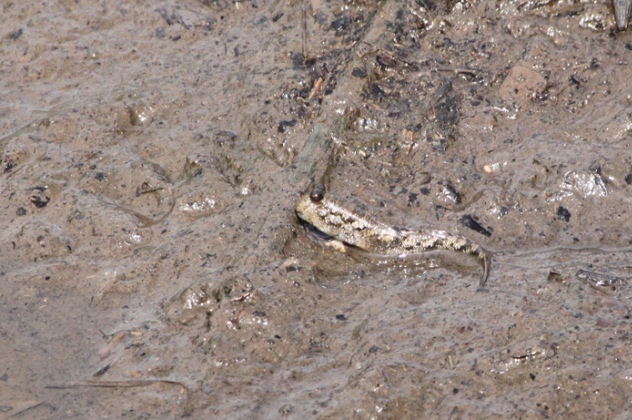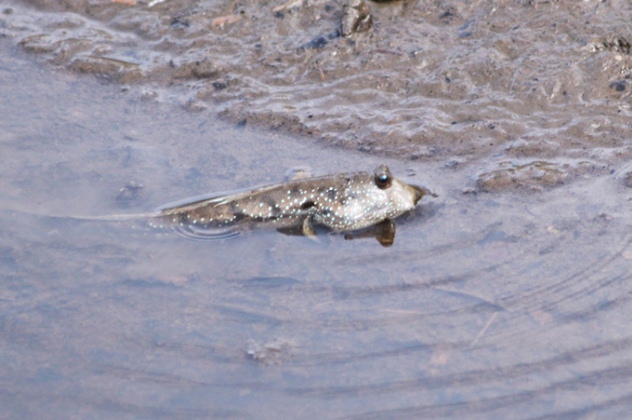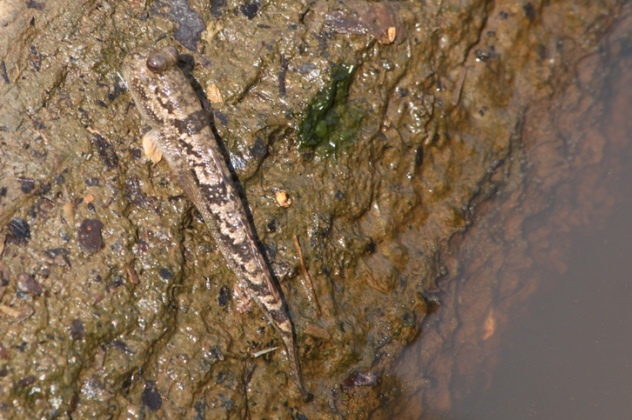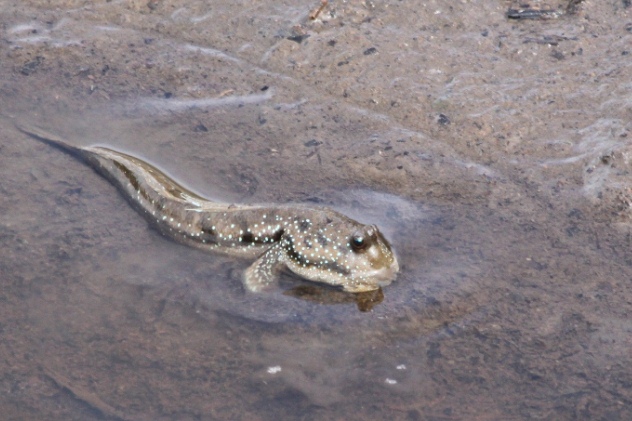I stopped by a little stream near Lutong Beach this morning intending to photograph egrets that seem to hang out in that area. Luck was against me for as soon as I got down from my car, the egrets took flight.
Since photographing egrets was out of the question, I just looked around. Standing on the small bridge, I diverted my attention to the stream and the muddy banks. It was after watching patiently that I noticed the mudskippers.
As a kid in Bintangor, I was fascinated by mudskippers on the river bed of Rejang River during low tide. Being naughty, we kids used to try our catapult skills on these mudskippers but I must admit that I was not good at using catapults and never managed to hit any mudskippers.
Mudskippers are fish of the subfamily Oxudercinae within the family Gobiidae (gobies). They are commonly seen in mangroves and muddy shores..
Mudskippers have the ability to breathe through their skin and the lining of their mouth (the mucosa) and throat (the pharynx): This is only possible when the mudskippers are wet, limiting them to humid habitats and requiring they keep themselves moist. This mode of breathing, similar to that employed by amphibians, is known as cutaneous air breathing. Another important adaptation that aids breathing while out of water is their enlarged gill chambers, where they carry water in the exact opposite way divers use scuba gears. Divers carry oxygen in cylinders to breathe under water whereas mudskippers carry water in gill chambers to breathe while on land. The gill chambers close tightly when the fish is above water, keeping the gills moist, and allowing them to function. These fish are in fact more comfortable crawling around on the mud than submerged in water!
Digging deep burrows in soft sediments allow the fish to thermoregulate, avoid marine predators during the high tide when the fish and burrow are submerged, and for laying their eggs.
Even when its burrow is submerged, a mudskipper maintains an air pocket inside it, which allows it to breathe in conditions of very low oxygen concentration.
As their name implies, these fish use their fins to move around in a series of skips. They curl their muscular body sideways then push against the mud to spring forward. They can also flip their muscular bodies to catapult themselves up to 2 ft into the air. Their mouth faces downwards to feed on the mud surface.
They have eyes that stick out of their heads for an all-round view. The eyes act like some sort of periscope, giving them an amazing field of vision made even greater because their eyes can act independently of each other. When their eyes dry out, they can withdraw them into water-filled skin folds to moisten them.
 CY@CY Says Welcome to my dreamscape. Where a Lim is also a Ling.
CY@CY Says Welcome to my dreamscape. Where a Lim is also a Ling.



